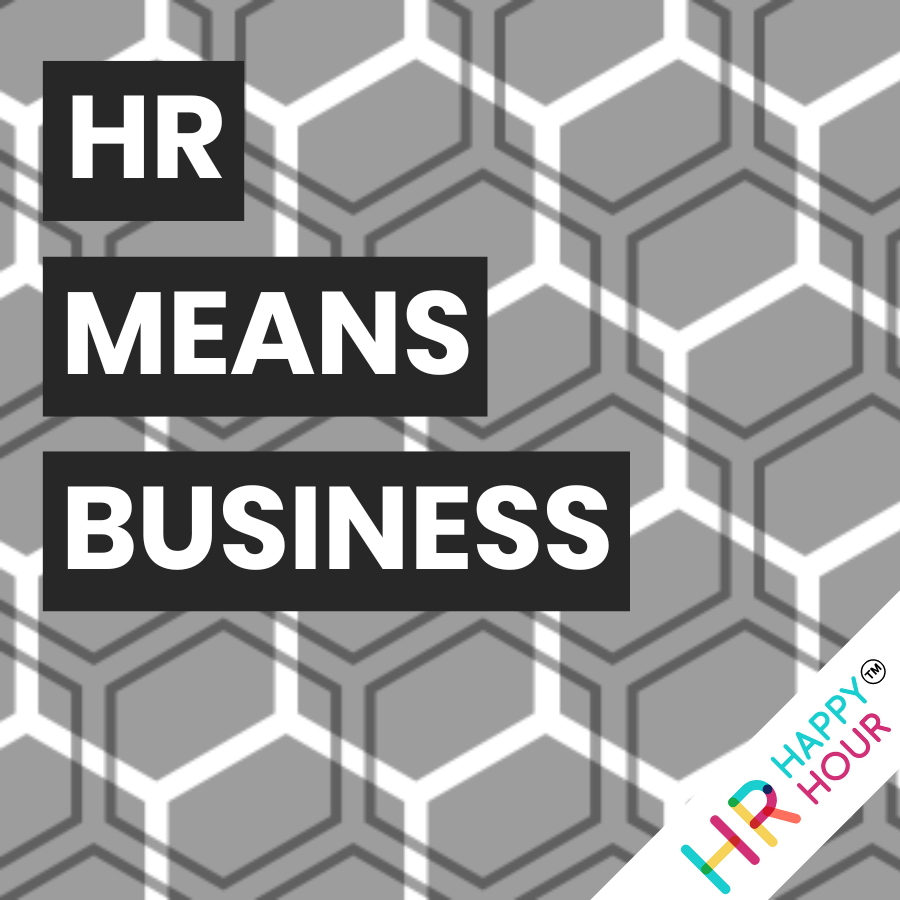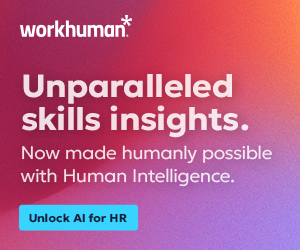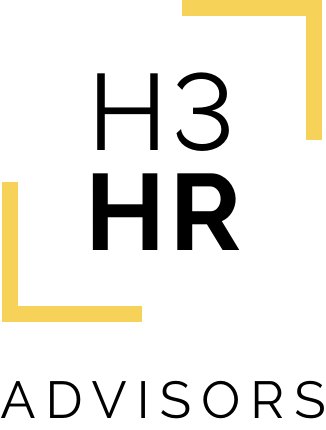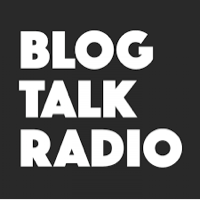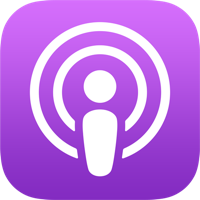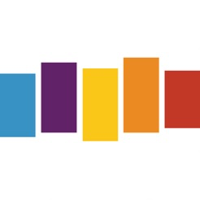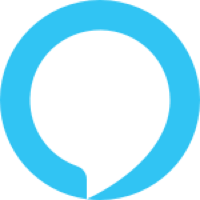Fostering Diversity and Inclusion: How Employee Resource Groups Drive Change
Hosted by
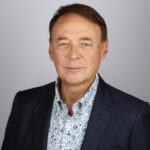
Mervyn Dinnen
Analyst, Author, Commentator & Influencer
About this episode
HR Means Business 14: Fostering Diversity and Inclusion: How Employee Resource Groups Drive Change
Host: Mervyn Dinnen
Guest: Paul Modley
In this episode Mervyn talks to Paul Modley, Director Diversity, Equity & Inclusion at talent solutions business AMS about how to move DEI initiatives up the corporate agenda and the key role that Employee Resource Groups (ERGs) play.
They discuss:
– Delivering value from DEI initiatives
– What are Employee Resource Groups and what value can they give
– Getting ERGs on the corporate agenda
– How you can reward and incentivise ERGs
– Importance of intersectional thinking between ERGs
– Best approaches to gain leadership support and sponsorship for ERGs and DEI initiatives
Thanks for listening! Remember to subscribe to all of the HR Happy Hour Media Network shows on your favorite podcast app!
Transcript follows:
Mervyn Dinnen 0:16
Hello and welcome to the HR Means Business podcast, which is part of the HR Happy Hour Network. I’m your host, Mervyn Dinnen. And today I’m going to be talking to somebody about a topic that I think is hugely important. Certainly one of the biggest topics I think on the HR agenda in recent years has been diversity, equity and inclusion. And I’m delighted today to be able to welcome to HR news business, Paul Modley, who’s the Managing Director for diversity, equity and inclusion for AMS. Paul, welcome to the show. And would you like to introduce yourself and tell listeners a little bit about your role?
Paul Modley 0:56
Thank you, Mervyn and delighted to be with you today. So yes, thank you for the intro. You kind of explain, kind of introduced me there, I’m responsible for diversity, equity and inclusion across the AMS business, I sit within our innovation function. And I wear two hats. I’m responsible for what we are doing internally as a business across our 10,000 workforce, making sure that we continue to deliver an inclusive culture and a sense of belonging for our colleagues. I also have an external hat as well in terms of making sure that when we are working with our outsourcing clients, that we are amplifying Diversity, Equity and Inclusion when we support those clients, and I’ve been doing this specific role for about three years now. My background is predominantly in ta I’ve worked in house for organizations like Barclays, ey latterly worked on the London 2012 Olympics and Paralympics when it was obviously in London in 2012. And I got involved in that right at the beginning. And that’s really where my interest in diversity, equity and inclusion developed to the point now where I’m obviously driving that for AMS ads business.
Mervyn Dinnen 2:12
And tell listeners a little bit about AMS, who they are and what it is they do.
Paul Modley 2:18
So we are a global talent acquisition, outsourcing and advisory business. We typically work with large corporate organizations to support them around their talent acquisition challenges or their services. So we work with a range of organizations across different sectors, including the likes of parties, Morgan Stanley, Goldman Sachs, Deloitte public sector across the UK. And from an outsourcing perspective, typically we’re working with those organizations on long term contracts. And they are outsourcing parts of their CAE functions or the entire thing. And we will work with them to deliver the service against their from an advisory perspective that we’re then working with organizations to to help them if they’ve got a specific challenges that they’re facing in TA, they may need some kind of tech advisory support, they may need some assessment support or they may need some di advisory support so so we can support our clients around a range of different services.
Mervyn Dinnen 3:34
You said that you first became interested or I think DNI was highlighted to you when you were working on London 2012 which, which I in fact, I actually was interacting with you at that time? Yes. Yeah. I was transitioning to what I do now from a company that was helping to supply people to you. In terms of d and I, how do you move it up the corporate agenda? I mean, you’re you’re you’ve you personally brought the internal AMS you’re talking to clients as well. What are the kinds of conversations that you need need to have initially?
Paul Modley 4:12
So I think the key the key requirements for this is to have senior leader commitment and buy in from the top. Certainly, we had that at London 2012 with our CEO at the time, Paul died and and our chair Sebastian Coe, totally got it. They totally understood the the the role that diversity, equity and inclusion would play in delivering a fantastic games experience not just for the athletes, but also the spectators and all the other different stakeholders. I also have that support here at AMS, in that I work really closely with our CEO David Lee, and our chair Rosaline Blair. And they support me and drive you know, drive the organization around around our strategy. So, so that senior leader senior level commitments, board commitments, is really important to make sure that we are kind of moving in the right direction. The organization, then as a whole really understands why it’s important, they can see that sort of senior level of commitment. And then you can move forward where that doesn’t exist, you might have some brilliant sort of diversity, equity inclusion teams in the business, but they’re not getting that buy in from senior leaders, then it’s really difficult to move forward, it’s really difficult to kind of achieve the success that that you want.
Mervyn Dinnen 5:33
How do you deliver value from DNI initiatives? I mean, that presumably is part of the conversation that you’ll be having with people. So what are your I suppose, views on that?
Paul Modley 5:47
I think ultimately, it’s about you know, the, why we do this in AMS is to kind of support our people to support our culture as a as an organization, we are a people based business. And it’s really important for us to be able to attract people. In all of the countries where we operate and kind of, you know, we’re looking for different talents, we’re looking to tap into underrepresented talent. And so for us value is really about being able to hire the people that we need in our business, and to attract the diversity of thought in our business. Thinking about it from all levels of diversity, whether it be age, gender, race, sexual orientation, social mobility, etcetera, that for us is really important, and that enables our business to grow. So that’s kind of, that’s the value that we, as an organization get from Dei, so that from an internal perspective that will enable us to continue to grow. And it will enable us to continue to kind of work with clients on on their agenda as well. So it’s less about less about kind of proving value through some hard numbers, you know, when I’m asking for investment in programs or, or heads, it’s really about right, so the impact of the business is going to be that we’ll continue to, to acquire the talent we’ll need, it’ll be we’ll continue to be able to stand out through our EVP. And we’ll be able to continue to develop and work with different clients, because we are seen to be the leader in the way that we’re managing our own dei programs.
Mervyn Dinnen 7:23
When you’re speaking to clients, is this. Are they already aligned with? What what they need to do? Or do you find yourself having to possibly, with them kind of go through the value that is derived and kind of why they need to kind of bring this approach into the organization?
Paul Modley 7:43
There’s no, I think, on the whole, when we are engaging with clients, for the first time, might be through a tender process a bid process it typically, dei is in the sort of top three, top five of the challenges that they’re facing, or the things that they want to address through this, this new sort of relationship. Now, it’s fair to say that organizations are on different parts of the journey, some organizations really advance in the way they’re thinking the way that they are taking dei forward. And then there are other organizations who are at different levels, a little bit behind smaller organizations or medium sized organizations, maybe just don’t have that sort of investment or, you know, they’re not where they need to be. So I think it really depends on the I think it depends on the sector, it depends on the region, it depends on the size of the organization. And I guess we’re able to adapt the conversation that we have, depending on that situation.
Mervyn Dinnen 8:43
Now, one of the things that I am keen to talk to you about our employee resource groups. Now, I was involved with a piece of research earlier in the year. That was primarily us, but also included, UK and some other countries. And one of the findings was that employee resource groups, whilst being very influential, certainly in the US and some places didn’t seem so influential in the UK, there was not such a great adoption of them. So I know from conversations we’ve had in the past that employee resource groups are an important way to help embed the DNI agenda. So I wonder if you could, I suppose, tell listeners a little bit about what are employee resource groups and what is the value they give?
Paul Modley 9:34
Yeah, so as you know, I’m a big advocate of employee resource groups and something that you know, we were really proud and I’ll talk a little bit more of the work that we have been doing within AMS but essentially employee resource groups are community groups of which are typically aligned to a diversity traits where A members of that community come together and allies as well. So it’s not just isn’t they’re not close to a particular group, but they’re there. They also, you know, it’s really important to interact with allies to, to really take that agenda forward. So we have eight employee resource groups within AMS, their global employee resource groups, and they aligned to the kind of typical areas that you would expect. gender, ethnicity, disability, neurodiversity, social mobility, veteran, LGBTQ, and essentially, these employee resource groups are led by individuals in the business. In AMS, they are volunteers. So they step up and take responsibility for leading our ERGs on top of the their day to day responsibilities. And they have the support of an ex co member as well, and some budget as well to kind of take their plans forward. And what we have found within AMS is that they have been a massive enabler for helping us to take forward and drive our inclusive culture. In the, in the business, particularly, I would say, our black employee network, and our contests per day moss employee network, which is aligned to Hispanic.
Paul Modley 11:20
So those two groups in particular really helped us to, to advance the work that we’re doing around Ethnicity, Race equity, across our organization, and they’ve essentially become critical, critical friends of the business, as well as creating these community groups where people come together, to learn to have some fun to kind of really challenge the business’s thinking, we utilize these groups to help us to, you know, when we’re doing columns, when we’re doing new business initiatives, when we’re rolling out new training, is to kind of get these groups to kind of work with us around around these different initiatives just to make sure that we’re kind of being thoughtful, we’re bringing diversity of thought into the things that we are rolling out. So that kind of that criticality, the the business business critical friends has become, it’s become really important. And certainly, they they’ve got the ear of the CEO, the chair, we invite them into our we have quarterly dei board meetings with CEO and chair and we invite our Employee Resource Group Center, they can feed in directly to, to our dei board, as well as our corporate board as well. And they talk directly to our non exec directors around, you know, the challenges that we’re facing from a, you know, from a from a sort of diversity perspective. So, yeah, they are incredibly important to us. They are a brilliant enabler, as I say, for continuing to build and drive on our inclusive culture. And I would say, just before I hand back to you, we we see a brilliant adoption across our UK business, we’ve never had any challenges in our UK business to kind of, to kind of support and get people involved. And we see that across all of our regions, where we operate as well.
Mervyn Dinnen 13:20
For for people listening to this, who think we don’t do this in our organization, how do you get started? What, who I suppose owns the initial initiative, who kind of takes responsibility for them?
Paul Modley 13:35
Yeah, so it kind of started organically for us, probably, whilst we relaunched them formally, about 18 months ago, I would say it started organically about six years ago, where our first group was set up. And it was the LGBT queue. Employee Resource Group, wasn’t really it wasn’t called an employee resource group then, but it was the kind of few individuals in the business who said, look, I think we as a business need to really think about our focus around LGBT inclusion, you know, and, and they kind of came to me because whilst I wasn’t sitting within a formal DNI role, then I kind of normally was the person that people came to, if they wanted to talk about sort of DNI initiatives across the business. And I said, Look, if you if you’re interested in formulating a group, and do it, you know, and I will support but you know, it’s really important that this is led by, you know, there’s employee kind of buy into this, it shouldn’t be shouldn’t be led by sort of senior leaders. It shouldn’t be imposed on the business it needs to come from, from the business and that’s how it started with our LGBT group about six years ago. And as I say, it’s it developed into us formally launching the employee resource groups 18 months ago and I think the key ingredients is there needs to be a kind of a demand from from the business colleagues need to kind of get behind it. needs to be executive support for you need to have a sponsor, a business sponsor to really help that group with formulating their their goals, their objectives, its strength, etc, and hopefully some budget behind it as well. So we have put a little bit of budget behind our ERGs so that they can deliver against against their plans.
Mervyn Dinnen 15:22
And is this Do people tend to meet almost like I suppose, a special interest group in an organization? Or is this done more kind of, I suppose, in the flow of work, shall we say.
Paul Modley 15:34
So most, in fact, all of them will have kind of formal governance structures, I think governance lightly, you know, not not not to make it too formal. But they do have me too, they have monthly meetings. They have, you know, they’ve got plans, they’ve got their sort of annual goals that they’re they’re working towards, we have a what we call a milestone calendar of events that we work towards. So each of the employee resource groups will have one or two milestone moments in the year that they are kind of working towards. So for example, you know, we just had a busy, busy quarter, we have pride in June, which is obviously a big, big celebration, a big milestone moment for our LGBT group. So a lot of planning went behind that in terms of events that we were running marches that we were supporting. And then in July, we have disability pride, many people won’t know about disability pride, but it’s, it’s a movement really to support disability inclusion that, again, our disability ERG, we’re very busy, very busy in the sort of months running up to that to kind of get our events and activities behind that. So yeah, we were trying, we’re quite formal in the way that we operate, so that the groups are very much aligned and supporting the business. And obviously, they’ve got that sort of senior leader support to help them move forward as well and kind of break down any challenges or barriers that may exist.
Mervyn Dinnen 17:04
And in terms of, I suppose, from the businesses viewpoint, is there, do you have specific individuals with an erg? Who you identify as running them? Or as from what you’ve said, it sounds more kind of not committee, but more kind of kind of a group? So yeah, we do antibody?
Paul Modley 17:23
Yeah, we have, we do have specific leads, but they, there could be any level within the organization, I’ve got a look at our ERGs, we’ve got a real mix, we’ve got some kind of, you know, people at lower levels of the career level, career level, career ladder, and then more senior people. And I guess the important ingredient is they it’s kind of a commitment to to that particular erg. And it doesn’t matter whether you know, you’re a lower level or a senior level, you know, as long as you’ve got that kind of commitment, you’ve got that interest, then then you can take the lead. And and obviously, I work with those dlgs to support them as well from from a central perspective to in to ensure that they’ve got that support coming through from my team as well.
Mervyn Dinnen 18:13
How do you incentivize them? So I mean, you mentioned before having some budget for the initiatives that they want to do, but in terms of the individuals who get involved, yeah, how do you incentivize them? How do people get rewarded? Other than, I suppose other than, you know, the satisfaction of what? For colleagues?
Paul Modley 18:33
Yeah, it’s a really good question, a very topical question for us, because it’s something that we are looking at. So within AMS, we, we make sure that they’re, if they’re, if they’re making time to do this, that they are being recognized through the sort of performance management process. So it’s not being seen as, right, it’s just side to side a desk activity, but there is value in it. So you know, and that’s why it’s important that their their line managers bought in and support him. We’re kind of looking to move into the next iteration of that in terms of how do we how do we formalize that a little bit more so that one of the ideas that I’ve talked to some of our clients manhood from our clients are doing is that, you know, if they are, if they are making time to be a leader, that it’s, it’s formally built into their job description. So if they’re kind of, I don’t know, a recruiter and they’re aligned to a client, well, 10% of their job description as to talk about the role of the leader of that erg. So that’s something that we’re looking at. And the other thing that I know some organizations are doing is paying additional, additional salary, if you like, for the role that they’re doing within the erg. So that’s not something that we are committed to at the moment but it’s something that we’re definitely looking at as well, just in terms some concessions I’m having externally just to understand how widespread that is.
Mervyn Dinnen 20:06
Yeah, I guess you you, you need to have some kind of structure. Because otherwise, if it’s a kind of a volunteering thing, then it’s it, you don’t really get any structure around it. Yeah. You need something not formal, but also something more. So if people are listening to this thinking, You know what, this, this would be a great idea. In our organization. You’ve mentioned obviously, a number of the different groups from LGBTQ, you know, age and excetera. How would somebody how would some say HR get started? Because it’s not, you know, you don’t go to the board and say, We need employee resource groups. So what, what what are the opening conversations? And who are they with?
Paul Modley 20:53
I think, I think what you’ll find is, there’s probably things, if people are feeling like we don’t have these groups in operation, well, there’s probably things going on across the business already, that HR may not be aware of, I think the important thing is, is to open up the comms channels, and really start talking to colleagues and the business about, but we’re thinking about sort of establishing employee resource groups, what do you think, you know, this is what this is, this is why we think, you know, it’d be a good idea to do them. But you know, it’s really important that, you know, our colleagues buy into that. So I think it’s that it’s opening up the columns and engagement channels, positioning, what employee resource groups are, how they operate, the fact that they need to be employee LED. And if there’s anybody interested in the business, who’d like to kind of take something forward, this, you know, to start having those conversations and really started small, it doesn’t need to be too formal, I think, you know, start these things organically, and they will kind of they will evolve and build and have some structure, obviously, to kind of support them. But don’t overcomplicate it to start with, I think it’s just really start to build and allow, allow colleagues to come together and start having conversations, whether it be about race, whether it’d be about gender, whether it’d be about neurodiversity, or whatever veterans, you know, just let allow colleagues to start having conversations. And it’s really interesting how these things start to evolve.
Mervyn Dinnen 22:19
And in terms of leaders, I can think I suppose earlier in my career, I have one or two organizations where I’ve worked, where I wouldn’t say there’s formalized what we’re discussing now and what we’re describing now, but smaller groups where senior people in the organization might drop in for a few minutes and say, This is good, and then completely forget about it. So in terms of getting that support and buy in, is it a case of working slowly to, I suppose, show the value? Or is it? Is there something else that people can do to maybe get more leadership support?
Paul Modley 23:00
Yeah, I think you’ve got a like, with all these things, where if you’re not going to get every leader on board, at the same time, with the same level of commitment, and I think you’ve got to kind of choose choose your leaders who, you know, are initially who are more committed than have a particular lived experience are more aligned to, to a group for for whatever reason, and I think, you know, choosing to get those leaders involved start with getting their commitment. And I think other leaders were looking and thinking all right, well, you know, I want to kind of, you know, if they’re kind of getting involved and driving there, maybe I need to step up and do my thing. And I think that that kind of healthy competition definitely, definitely helps. It helped for us in the Olympics, where I think we did some really interesting things very early on, if you think about sort of 2012 Well, I was a 2007 to 2012, we really drove that, that competition across our directors in terms of their diversity hiring. So it almost became a bit of a competition, we were a sport based organization. So we wanted to introduce some competition. So you know, they were they all took responsibility then for hiring underrepresented talent and kind of making sure that they were not at the bottom of the leader table. And I think it’s the same thing with the about getting getting leaders involved in in sort of the ERG activity, you know, you won’t get everybody involved straightaway, but I think generally it will create some, some level of interest across all of them.
Mervyn Dinnen 24:27
Okay, I suppose, as a final question, Paul, how do you how do you see in terms of I suppose the future in terms of how the ergs within your organization have developed? How would you see this, I suppose developing in the future?
Paul Modley 24:45
Yeah, I think there’s a couple of things. I think it’s, I think we’ve done a really good job at kind of getting our ERG set up and driving their agendas. What we want to move them into as a next step is that kind of intersectional thinking, so kind of getting getting grew puts together thinking about specific issues that may impact for example, you know, female, black disabled kind of communities, how you kind of bring that together and think about what what does that mean? What are the issues that that specific community are facing? I think that’s where it gets really interesting. And, and we’re starting to see that with our groups coming together. For example, during Pride, we had our LGBT community talking about mental health challenges facing that community. Or yeah, so that move to more of an intersectional approach, I think, is important. And then I think the other the other important point is, you know, we do a good job, I think it’s kind of regionalizing, our ERG as well, because you can’t just have a global approach to this because every region is different. So how we look at LGBT Q is a good example how we look at that from a UK perspective, compared to say, Poland, compared to China, compared to the US, you know, it’s really different than the challenges are very different. And so, kind of setting apart ERGs with the right regional support behind those issues is really important. You know, I think we do a good job there. We’ve got more thinking to do there. Take that forward.
Mervyn Dinnen 26:15
Okay. And if people listening to this, want to get in touch with you, maybe find out a bit more. How can people connect with you?
Paul Modley 26:25
Yes, I’m always really happy. And I certainly get a lot out of talking to peers in my network so people can contact me through LinkedIn. I’m on Twitter, Threads, the all social channels, but very happy for people to contact me directly here at AMS as well.
Mervyn Dinnen 26:44
Okay, Paul, thank you very much for your time. It’s been a pleasure to talk to you and I wish you I wish you lots of luck in the future.
Paul Modley 26:51
Great. Thank you so much, Mervyn.
Transcribed by https://otter.ai
Talk to us
If you want to know more about any aspect of HR Happy Hour Media Network, or if you want to find out more about a show topic, then get in touch.

